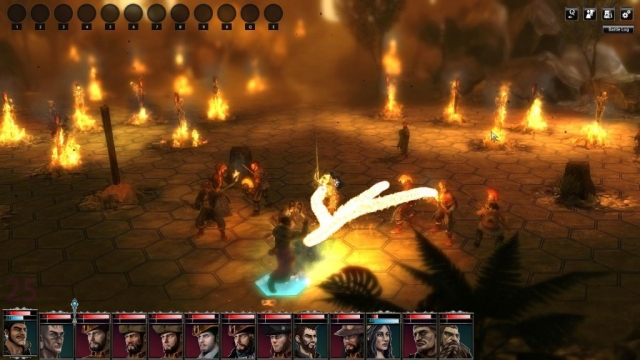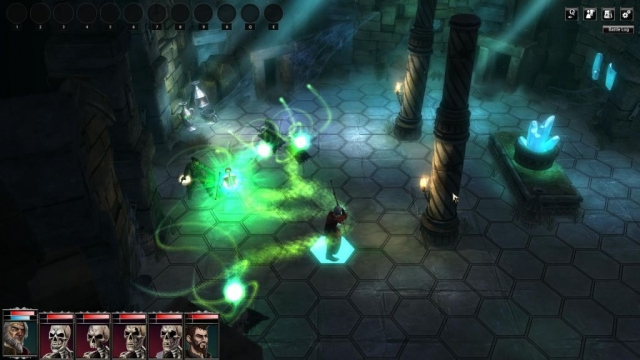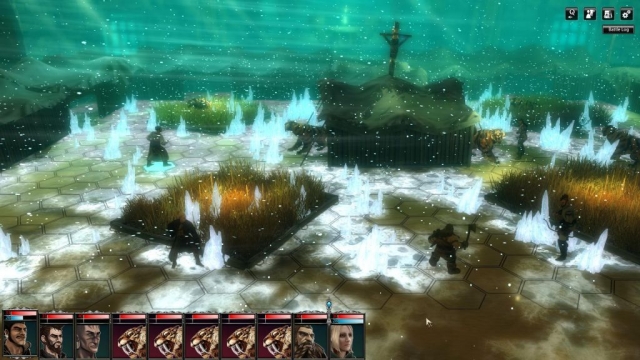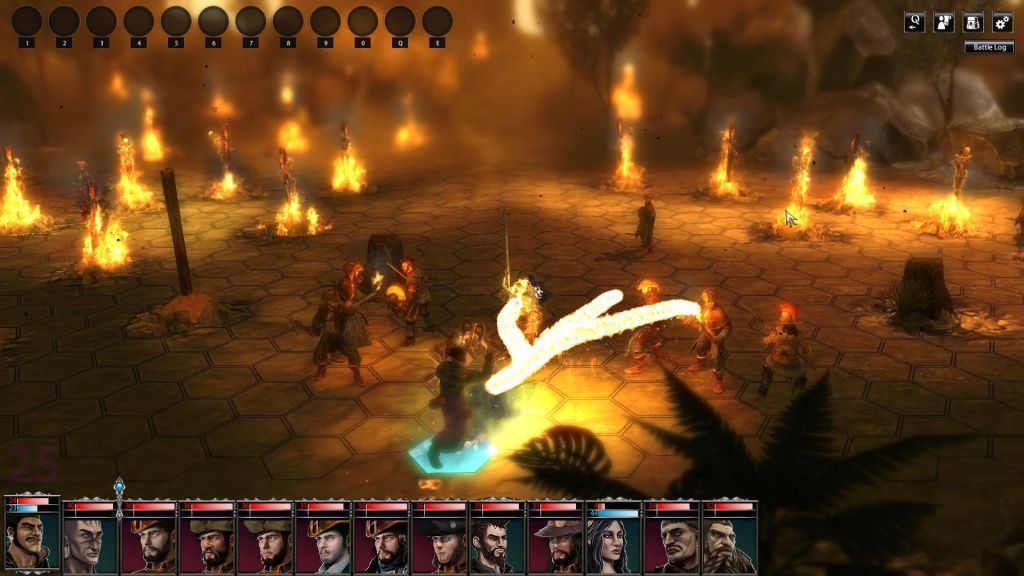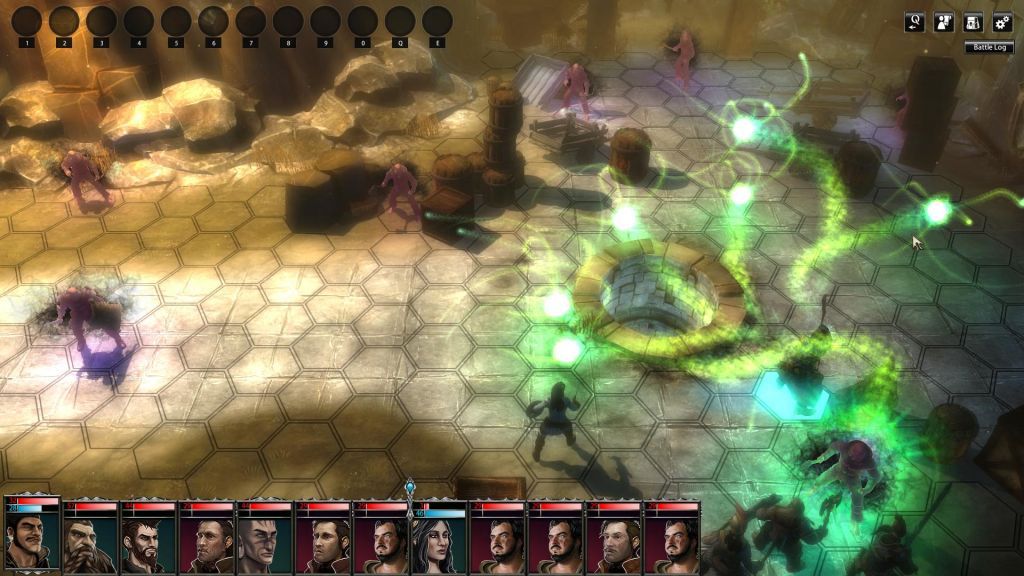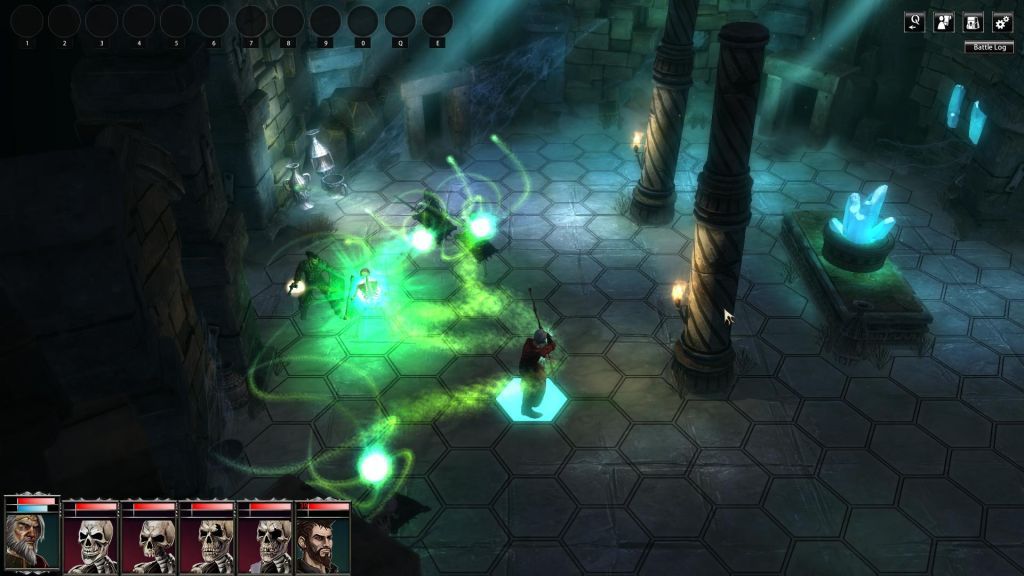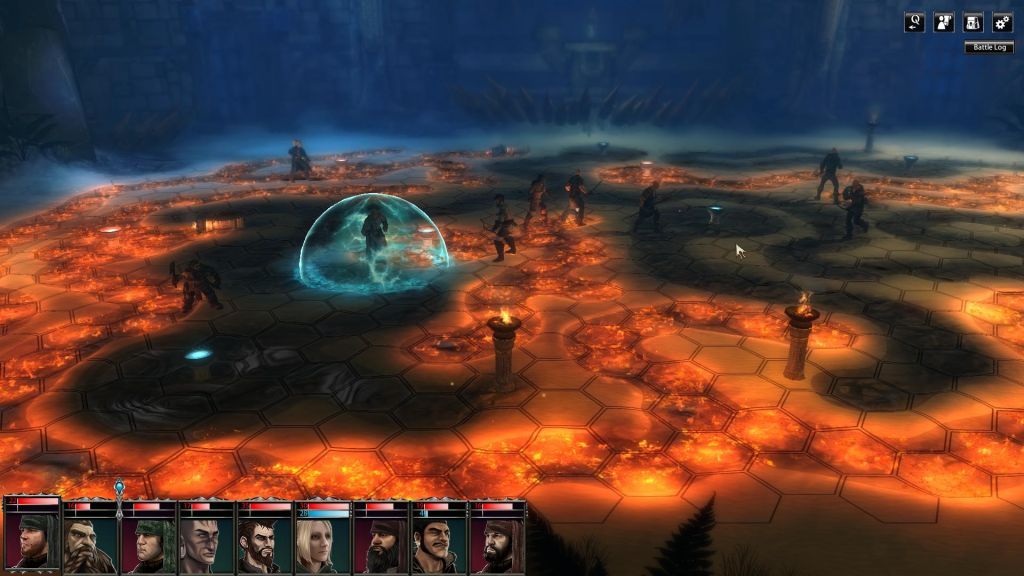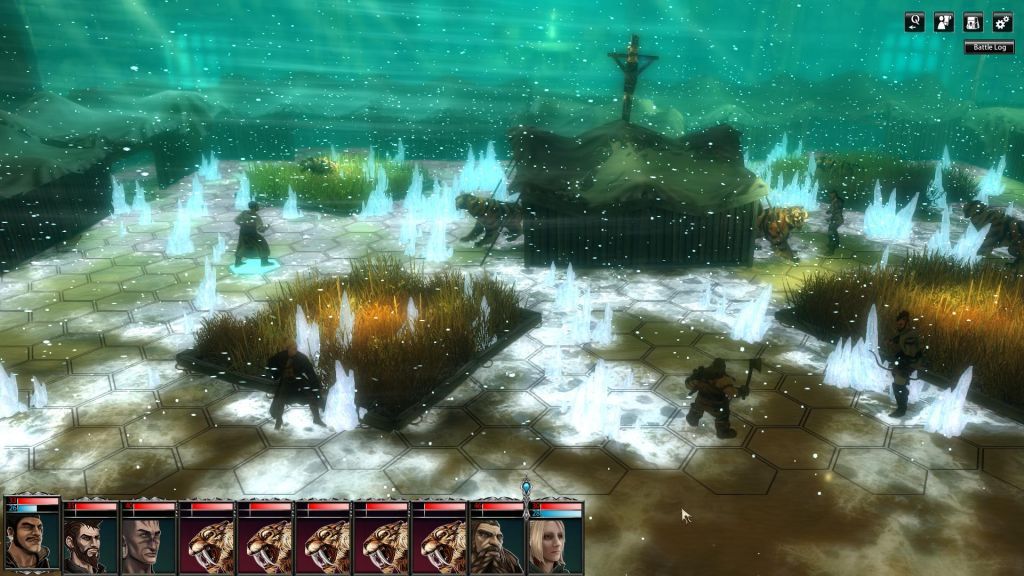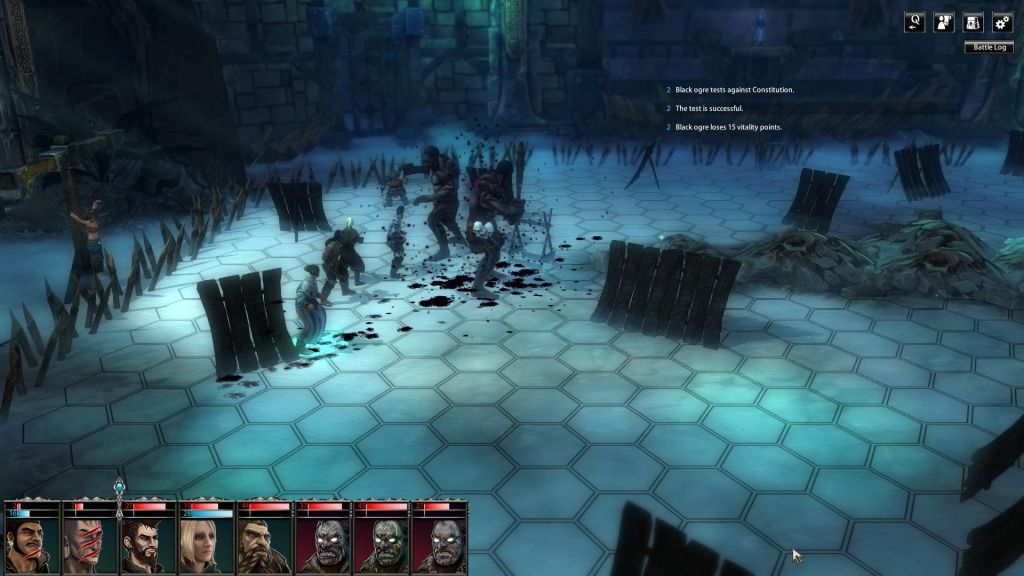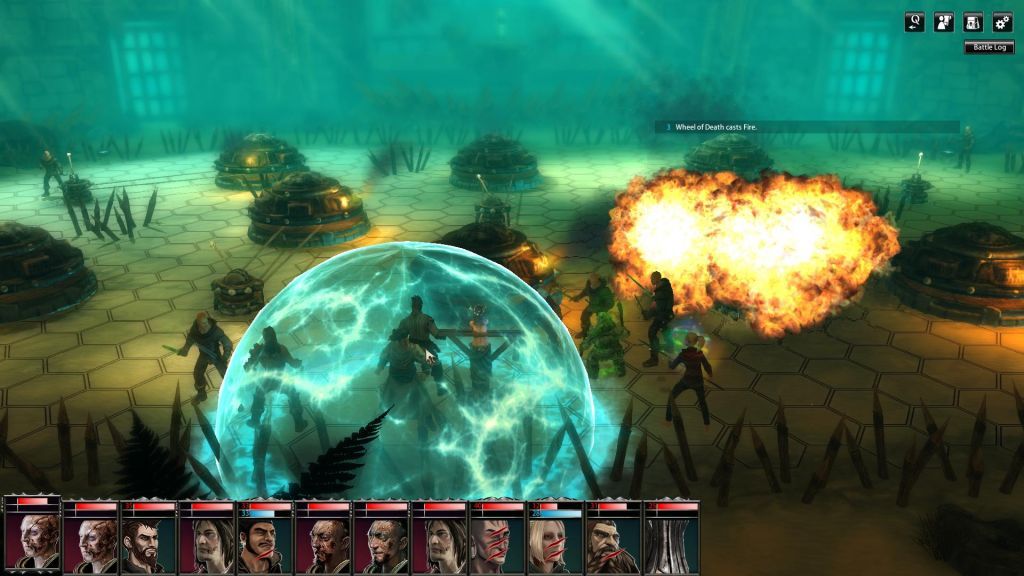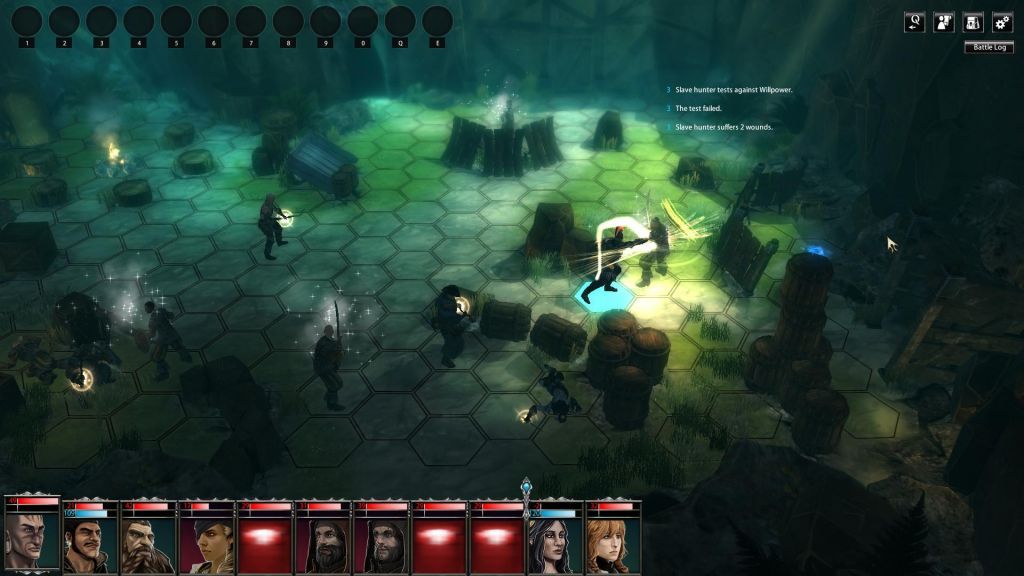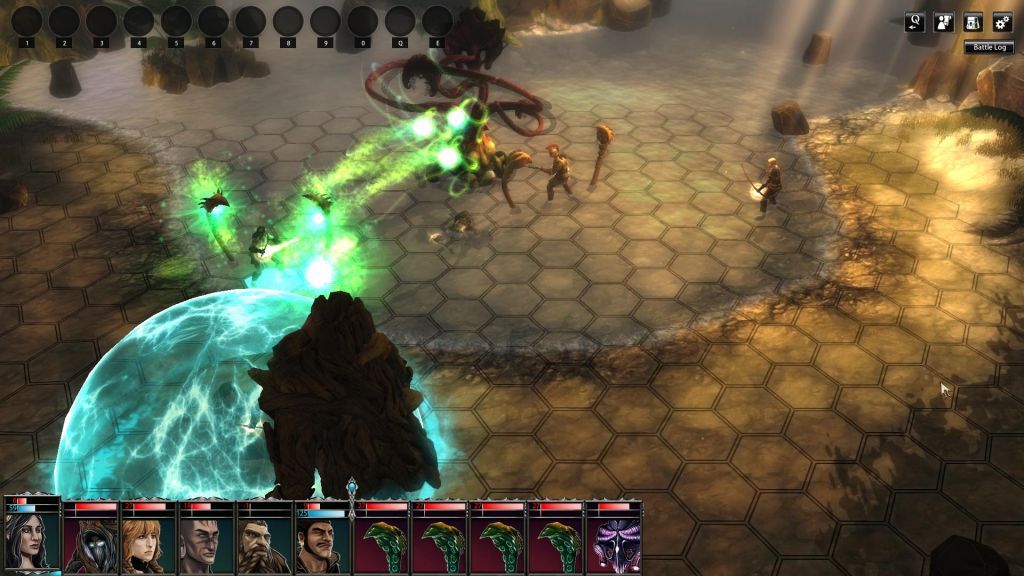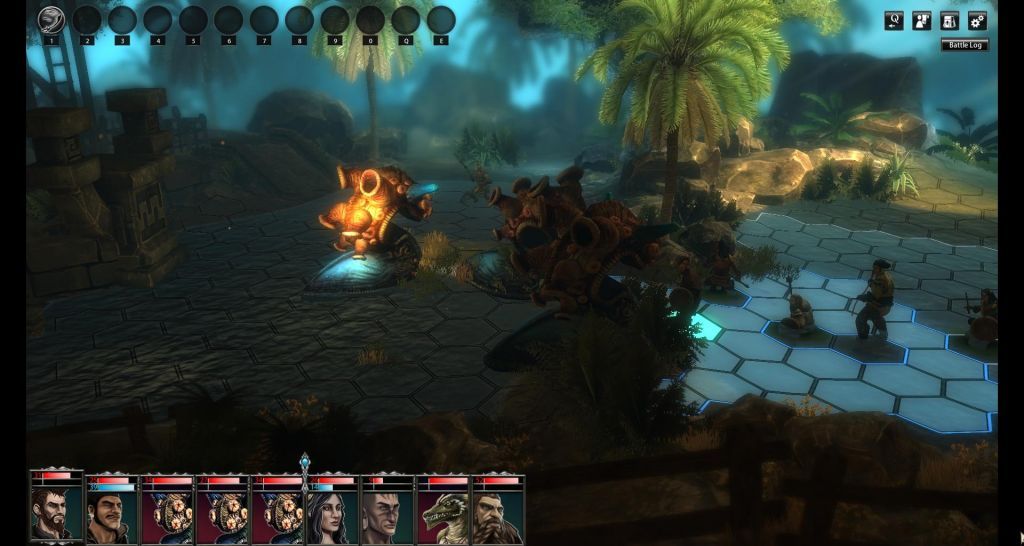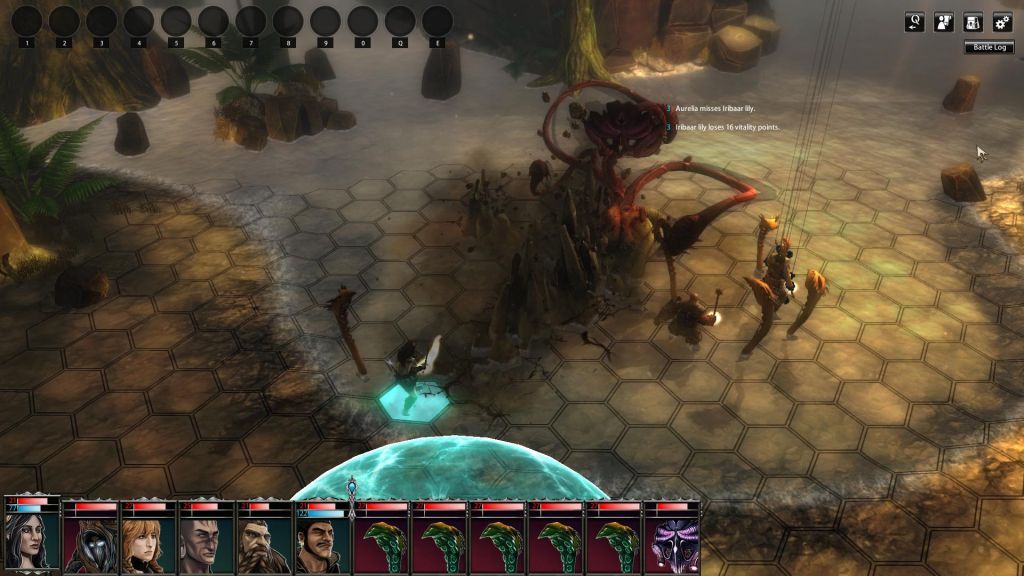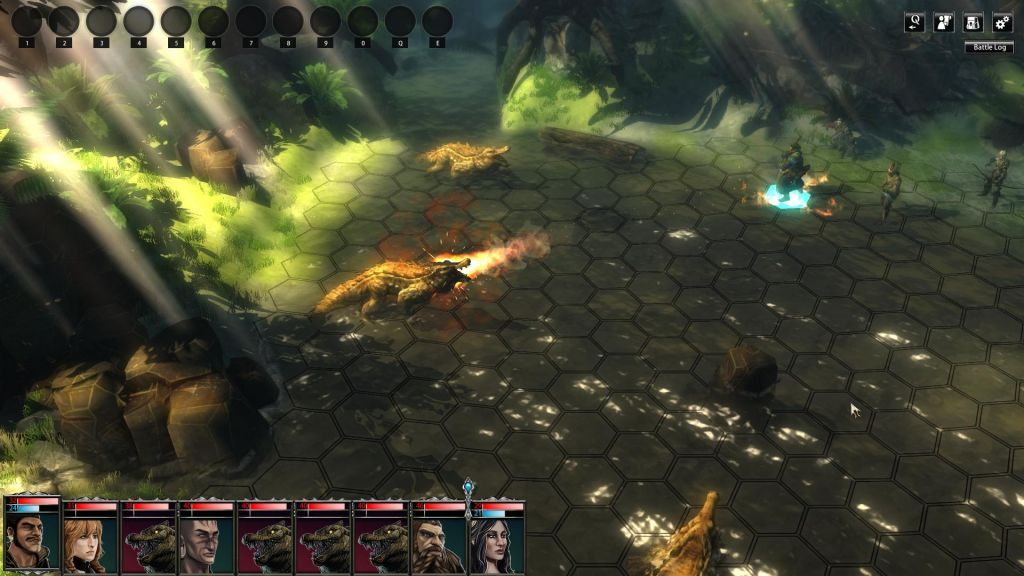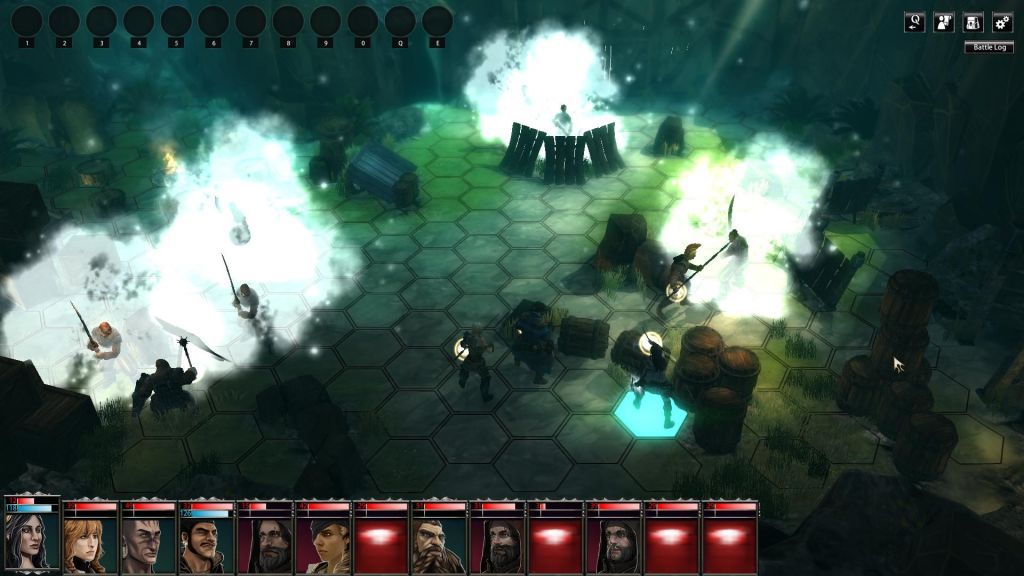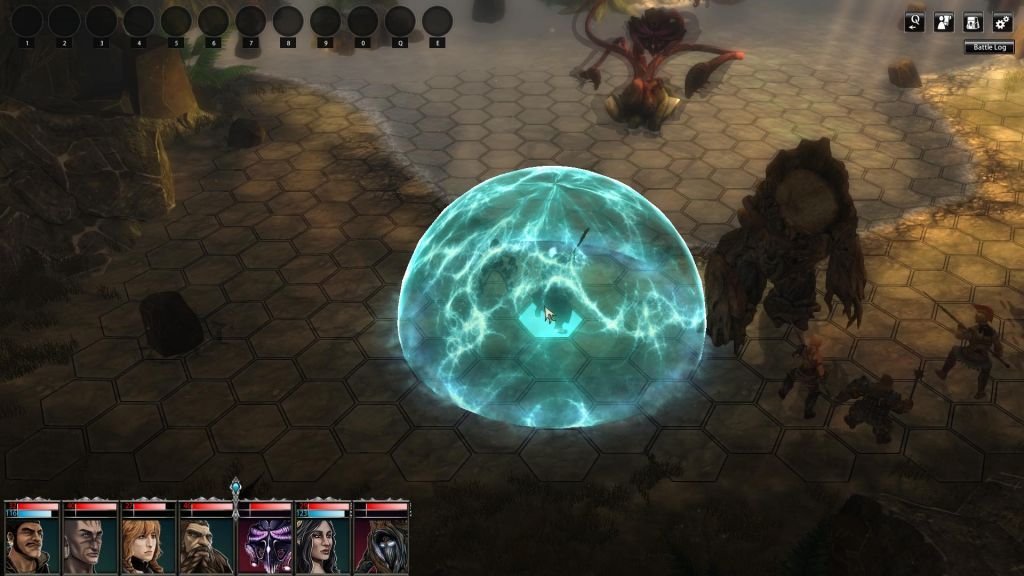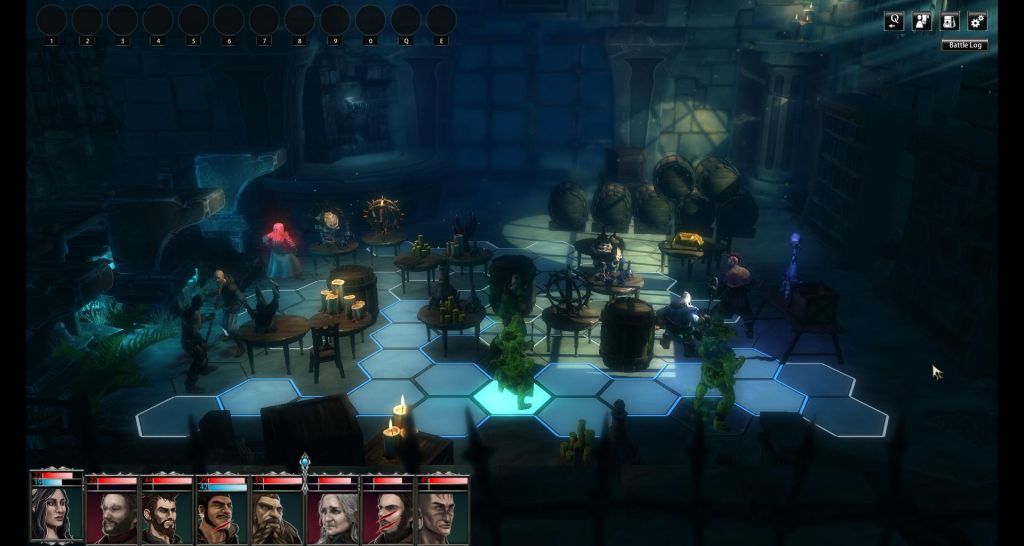Blackguards
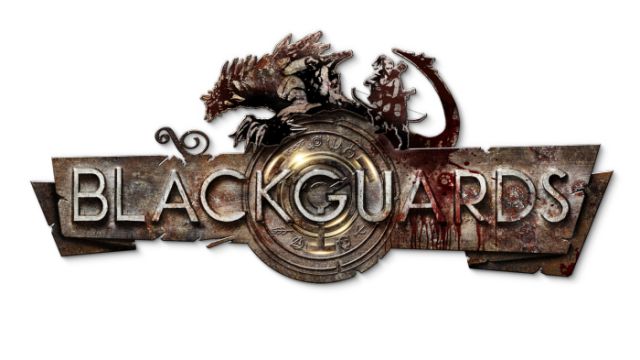
The Good: Innovative gameplay design results in experience like no other.
The Bad: UI could use some cleanup. Tutorial leaves one often flatfooted, requiring trial and error to discover many functions.
The Ugly: World map has no role, really, except to string together combat sequences.
Before I write about the good things in Blackguards, a new turn-based strategy RPG, and there are many good things to write about, I’ve gotta begin with a complaint about the fundamental premise of the game, which is quoted on the company advertising materials thusly:
“What happens when the only hope of a threatened world lies not with heroes in shining armor, but is placed in the hands of a band of misfits and criminals? Blackguards, the new turn-based RPG by Daedalic Entertainment, explores this very question. The player takes on the role of a convicted murderer who must use the help of a team of more than questionable characters to save the world from a dark menace.”
The problem is that the protagonist is not really a bad guy. Sure, he’s found standing over the body of a woman with blood on his hands and thrown into prison, but he suffers from that oft-used Hollywood malady – amnesia – and his guilt, if he is in fact guilty, is far from clear (though he has been convicted in a kangaroo court). Escaping from prison, he is joined by a self-admitted Dwarven arsonist, though it is not like he’s a serial arsonist. He’s more like a Tolkien-esque curmudgeonly dwarf who burned down one single tavern because the name offended him, likely while he was drunk. Also eventually joining the party is a wizard whose crime appears to be doing the horizontal mambo with the wife of a powerful man, and a hippy woodland chick who smokes pot (only in Blackguards they call it dreamweed) and hasn’t exactly been paying her credit card bills. In short, you’re not hardened “criminals,” and the setup for this adventure is really about a group of more or less normal fantasy characters who adventure and gain fame, like a thousand other RPG plotlines. So perhaps it would behoove the marketing guys at Daedalic to actually play the game a little prior to writing up their marketing materials. I’m just saying.
So after escaping from prison, the game opens up its world map. The greatest weakness in this game is in the world map, and traveling in general. The map looks like that from many fantasy RPGs – hills, trees, etc. The cities are marked with little symbols and their names. You can’t travel to any of them, or anywhere in fact, until a quest opens up a location. Then you click, and you’re there. Instantly. There’s no travel time, or sense of time in the game at all, or consumed supplies in the trip no matter how much map distance it covers, or chance of random encounters. Inside cities are nothing more than a prettily-drawn and minimally-animated painting of, say, a town square with icons of the armorer or the tavern owner or the healer, which open up little conversational menus to purchase goods and services or sometimes start quests. Quest areas when you travel to them are much the same, except that you find yourself looking at a smaller map of places you can visit within the quest. For example if you’re questing at an estate, you can visit the front gate, the main courtyard, the entrance hall, the stable, etc. On EVERY single quest I’ve done, at EVERY single place you visit, there’s going to be combat – that’s really how combat works its way into the game, and frankly it’s rather lame.
The biggest strategic piece of Blackguards obviously lies in the combat, and they’ve got some nifty gameplay bits stuck in there. Entering combat transports your characters to the combat area, which is a square grid region of fairly reasonable size. It’s nowhere near as expansive as that in X-COM, but is far larger than the miniscule space of The Banner Saga. You can slide the view left and right, up and down, to allow you to take in the whole battlefield, and you can tilt the isometric angle so you’re looking down nearly from up above or at a more oblique angle, but you can’t seem to rotate the camera. Combat, especially ranged combat, relies heavily on the mechanics of line of sight, and it can be hard to tell when an archer will be able to take a shot from some location or not without being able to rotate the view, so that’s unfortunate. Characters go in turn based upon their initiative which, as in the D&D world, is based upon their skill and stats and the weapon used. Right clicking on a character brings up a menu shaped like a circle with about a dozen options. Selecting some of those options brings up little arc menus outside of the circle with more options. Clicking on some of the items in the arc menu may bring up still more options. It can be a little crazy. For example, for my wizard I can select to cast an attack spell, from which I then have to select the specific spell, like fireball, and then I have to select the level of the spell I want to cast (1-4). Often you’ll delve down all those levels of menu only to find all the options greyed out. My wizard only has one level of fireball spell learned so the higher levels are always grey. Or maybe he’s out of mana entirely and can’t cast anything so all the levels are grey. My fighter doesn’t know any spells so that button leads him nowhere. Still, all those options exist in the menu, but you simply can’t select them. Cutting down the menu to include only those options that are selectable would have made the whole interface cleaner. Often-used choices can be assigned to a quick menu bar in the upper corner which helps, but not enough.
Beyond that GUI chaos, characters can do a lot on the battlefield. The action of a character is split into moving and doing something. The grid indicates the area in which a character can move and still have enough initiative left to commit an action, as well as how far they can move while consuming their whole turn. The battlefield is littered with objects, some of which can be interacted with. You can tip over stacks of boxes to form some cover from ranged attacks. You can cut down a chandelier to fall on your enemies or destroy their alarm bell before they can pull it to summon reinforcements. I know that stuff is kind of melodramatic, but it works. Puddles of mud or running water like streams can present a hazard to you or the enemy causing them to fall down, and getting back up consumes an entire turn. There can be methane deposits in swampy regions which can be ignited through magic or fire arrows causing an explosion that is truly devastating. I’m very happy with the level of interaction you have with the battlefield objects, and can’t think of another game that has tried that. Drink potions, cast spells, change weapons, or hold your action until the end of the turn – the number of choices are legion, and can make you feel really enmeshed with these characters and in these battles.
Winning combat and completing quests earns you APs (which I think stands for Activity Points, or maybe Adventure Points, but at the moment I’m not sure). You can spend these points immediately after combat to improve your character, adding new skills or learning new spells or improving those the character already has. APs can also be used to improve the character’s classic D&D base stats (like, say, strength, which in turn will improve an array of skills all at once), but this is a much more expensive activity, so you will have to save up your AP to do it. Additionally, the higher a character’s skill or stat, the more expensive it is to raise it still farther, so really maxing out a character stat is a single-minded affair that probably doesn’t lead to a very good character. The system is really geared towards creating somewhat rounded characters. In this way, the game has no actual leveling system; your characters gain skills and abilities more gradually over time, and the list of things you can level up is impressive. When you pull up the character sheet you are faced with five tabs of things that can be improved – hit points and special weapon attacks, basic skills like animal lore and wilderness survival. It is difficult without a lot of thought to know where to best spend APs and a fair chunk of the game strategy component lies here. It is an approach to character improvement that I really liked.
At their core, the gameplay styles of these turn-based RPGs are all the same. Plan your combat, characters perform their moves, the enemy gets their turn, and wash, rinse, repeat until the combat is over, gather experience, level up, buy equipment, adventure forth. Yet surprisingly, speaking as a guy who has reviewed a lot of them very recently, subtle and not so subtle changes to the game mechanics can make the difference between an X-COM (which seems at present to be the gold standard for this kind of game) and The Banner Saga (not to bash it again, but I’m bashing it again). If you can get past traveling the world map on rails, every location and quest chosen in order for you, the combat is rich enough to make Blackguards worthwhile, and I think comfortably places it near the upper end of that range.
Reviewed By: Phil Soletsky
Publisher: Daedalic Entertainment
Rating: 80%
——————————————————————————–
This review is based on a digital copy of Blackguards for the PC provided by Daedalic Entertainment.
 Game Over Online
Game Over Online